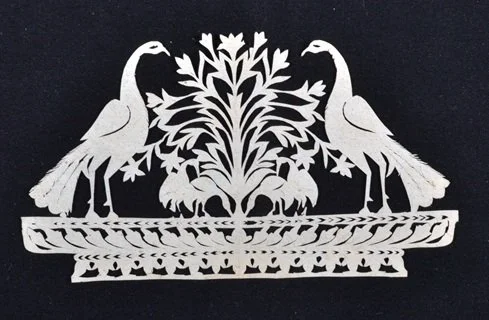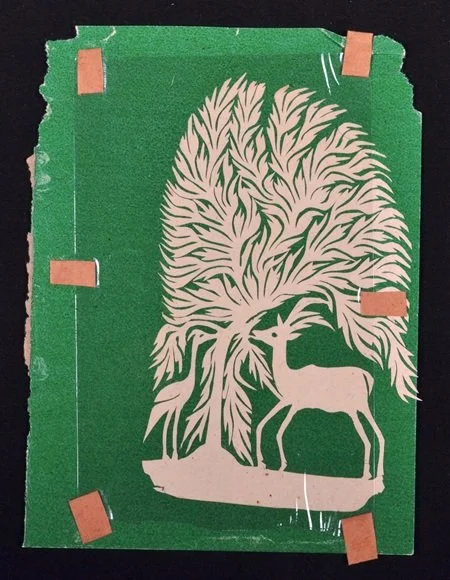Sanjhi Craft: The Medieval Art of Paper-Cut Craft in Jaipur
By: Nikita Sharma
Curator, Gyan Museum
Inside Gyan Museum’s galleries, a rare and intricate art form tells the story of India’s devotional traditions. Sanjhi craft, known for its hand-cut paper stencils, is a medieval art once used to decorate temple floors with temporary designs of color and pattern. Originating in Mathura and Vrindavan, the sacred land of Lord Krishna, Sanjhi began as a ritual form of worship and is now preserved as an important part of India’s artistic heritage.
From Twilight Rituals to Timeless Art
While its origins lie in the temple traditions of Mathura, Sanjhi also found appreciation in regions with strong Vaishnavite patronage, including Jaipur. The relocation of the Govind Dev Ji idol from Vrindavan to Jaipur in the 18th century created a cultural connection that allowed devotional crafts like Sanjhi to be admired in the region.
Today, Gyan Museum, one of the best museums in India, preserves a rare collection of 19th-century Sanjhi stencils, each hand-cut with remarkable precision. Once meant to be fleeting works of worship, these pieces now hold lasting significance as part of Jaipur’s cultural memory, offering visitors a glimpse into the artistry and spiritual traditions of India’s past.
The Sanjhi Collection at Gyan Museum
Our collection of 19th-century Sanjhi artworks offers a rare glimpse into this fading tradition. Each piece is cut entirely by hand from handmade paper, its precision reflecting both artistic mastery and spiritual intent.
Highlights include:
Architectural jaali patterns inspired by Mughal and Rajput trellis designs
Krishna Leela scenes—from deer resting under trees to cranes in lotus ponds
Sacred symbols such as the kalash, peacocks, serpents, and floral vines



Calligraphy works where devotional scripts intertwine with floral motifs
Once meant to be fleeting, these stencils are now preserved under museum care, allowing their fine details to be appreciated for generations.
Preserving an Ephemeral Legacy
Sanjhi was never intended to last—it lived for a single ritual. At Gyan Museum, we see the responsibility in giving these works a new life beyond their intended moment, conserving not just the paper but the devotion and cultural memory embedded within each cut.
Visitors can encounter these rare examples alongside over 2,500 other objects from our collection, spanning 3,000 years of history—from miniature paintings and manuscripts to gemstones, textiles, and ceremonial art.






